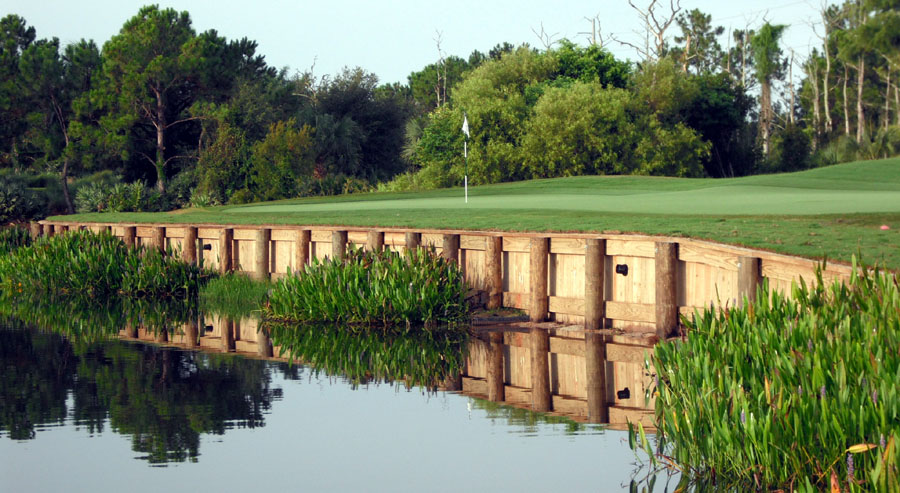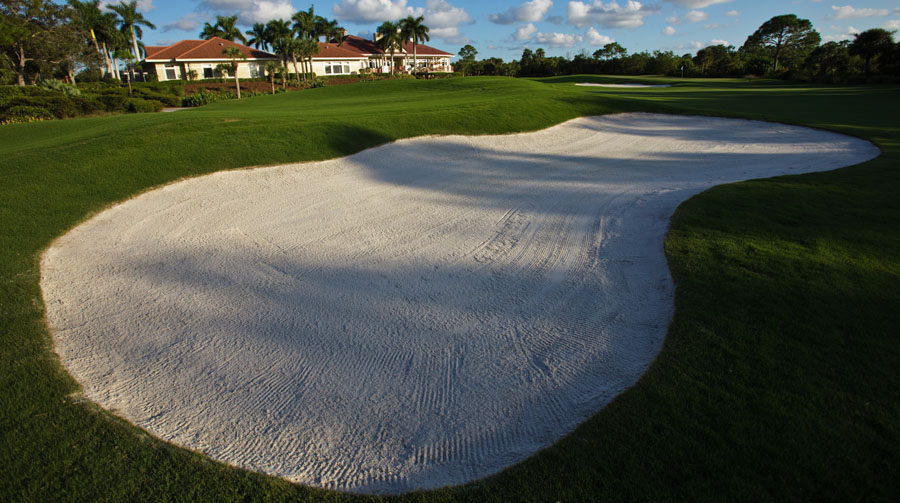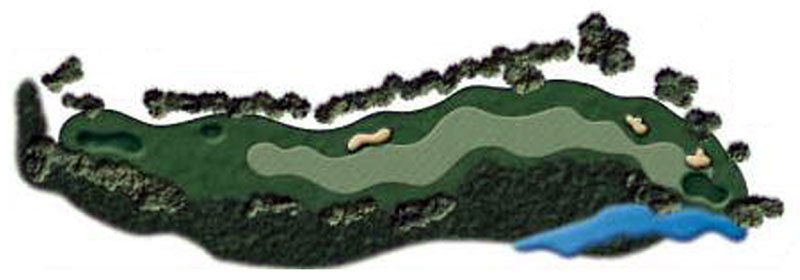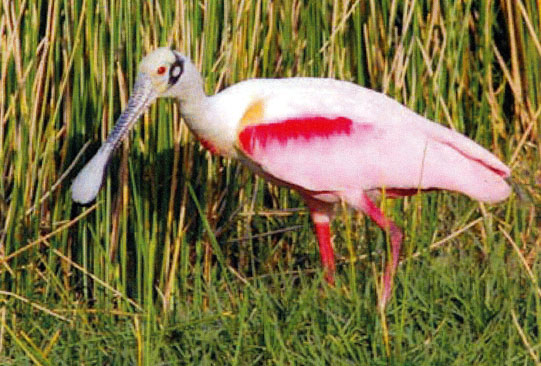
Winter 2017 issue of Florida Golf Magazine features "The Florida Golf Architecture of Arthur Hills" Click here to read it.

Written for Florida Golf Magazine's by Golf Course Architect, Arthur Hills
 Designed by world renowned golf course architect Arthur Hills, Collier’s Reserve was the world’s first Audubon Signature Sanctuary with Audubon International.
Designed by world renowned golf course architect Arthur Hills, Collier’s Reserve was the world’s first Audubon Signature Sanctuary with Audubon International.
By their very nature, golf courses offer significant open spaces and opportunities to provide needed wildlife habitat in increasingly urbanized communities across North America. At the same time, golf courses are called upon to address environmental concerns related to the potential and actual impacts of water consumption and chemical use on local water sources, wildlife species and native habitats.

In early 1992, we were hired to design a golf course nestled along the scenic Cocohatchee River. It became Collier’s Reserve Country Club—a private, gated community in Naples, Florida.
Collier’s Reserve was the world’s first Audubon Signature Sanctuary with Audubon International. Having maintained the high environmental standards over the years, the Club celebrates 22 consecutive years of Audubon Certification in 2016.
Before a line was drawn or a shovel turned, we signed up with Audubon International and worked very closely with them on this project. On every residential parcel, we preserved a generous buffer of 30 to 40 feet of untouched natural vegetation behind the houses and out to the golf course. We also planted wetland plants around all the ponds and preserved upland scrub oak growth throughout the property.
 "It was a good experience to work with Audubon International at Collier's Reserve. Superior golf courses are created by being more sensitive to the environment, and Collier's Reserve is, indeed, superb!" - Arthur Hills
"It was a good experience to work with Audubon International at Collier's Reserve. Superior golf courses are created by being more sensitive to the environment, and Collier's Reserve is, indeed, superb!" - Arthur Hills
I knew that Audubon International's objectives were in line with ours—to build a golf course with environmental preservation at the forefront. Becoming an Audubon Signature Sanctuary Course is a prestigious award of distinction. The “Signature” level is the toughest to achieve.
Stringent requirements had to be adhered to in order to receive Signature status. You might be surprised at just how stringent. Audubon International dictated, for instance, the way the maintenance building was constructed so that it was energy efficient. They mandated how wastewater and used oil were to be disposed.
Becoming environmentally friendly at that level means a lot more than building birdhouses and letting the grass grow. What we accomplished at Collier's Reserve set the standard for maintenance facilities at most all of the top private clubs in southwest Florida.

Playing at 6744 yards from the back tees with Paspalum tees, 419 Bermudagrass fairways and roughs, and TifEagle greens, there are many holes that could be called “signature holes”, but when asked, the members usually mention holes #6, #12, #14 and #18.
 The 462-yard, par four, 6th hole is rated as the most difficult golf hole at Collier's Reserve Country Club.
The 462-yard, par four, 6th hole is rated as the most difficult golf hole at Collier's Reserve Country Club.
Hole #6 is a long par 4. The main feature on the hole is the large lake that comes into play along the entire length of the right side. The green is nestled tight to the water and has a large bunker at its left front.

This brute is easily rated as the most difficult hole at Collier's Reserve. However, the members go one step further and call it “the hardest hole in Collier County!” It's a fantastic golf hole and a genuine test of one’s skills.
Playing at around 400 yards for most members, this par 4 has a forced carry over water to a wide fairway landing area that is framed on the left by two fairway bunkers that can ensnare those who are long, but wayward.
Following a good drive, most players are still hitting at least a long iron or perhaps a wood along the very tight fairway that eventually leads to the green. An accurate second shot is required, as the water remains firmly in play down the right, while a wall of oaks, pines and palmettos forms the left boundary. Most golfers choose to bail out to the left and then try to chip up and get their par. Any ball hit short and to the right of the 6th green will likely kick into the water. Players who steal a par here are very happy!

 One of the most beautiful golf holes in Florida, the 12th hole at Collier’s Reserve is most often compared to trying to land your golf ball on a kitchen table. This challenging par three plays at 179 yards from the back tees and 108 yards from the forward tees.
One of the most beautiful golf holes in Florida, the 12th hole at Collier’s Reserve is most often compared to trying to land your golf ball on a kitchen table. This challenging par three plays at 179 yards from the back tees and 108 yards from the forward tees.
The 12th hole is another signature hole at Collier's Reserve. One of the most beautiful golf holes in Florida, it is most often compared to trying to land your golf ball on a kitchen table.
This challenging par three plays at 179 yards from the back tees and 108 yards from the forward tees, with four more options between the two.

The highly-elevated green is sloped slightly back to front with two deep bunkers on the right, one on the left and another deceptively placed at the left front corner. It can be challenging to hit the 12th green when it's windy, so if you make three here, you're doing well.

 The green on the 348-yard, par four, 14th hole at Collier's Reserve Country Club is guarded on the left by water and a bulkhead.
The green on the 348-yard, par four, 14th hole at Collier's Reserve Country Club is guarded on the left by water and a bulkhead.
The 14th hole, a short par four, is a favorite because the placement of the tee shot is so important. The hole plays to only 340 yards from the back tees. The approach to the green will be much easier if the tee shot is well-placed.
This is an interesting short hole. What looks to be a fairly benign hole from the tee, actually requires a forced carry over a lake on the second shot.
What I like the most about #14 is the risk-reward factor. I've seen birdies here and I've seen double bogies here. You must be precise with your second shot into the very narrow and shallow green.
If the pin is tucked a little bit to the left, you have to be pretty careful because of the water and the bulkhead guarding the green. The 14th is a birdie hole that can easily turn into a double-bogey hole.

 18th Hole - Players who are fearful of the Cocohatchee River down the right side may not like the left-side options presented by this second landing area bunker on the scenic, but challenging finishing hole at Collier’s Reserve.
18th Hole - Players who are fearful of the Cocohatchee River down the right side may not like the left-side options presented by this second landing area bunker on the scenic, but challenging finishing hole at Collier’s Reserve.
From the clubhouse, the view of the Cocohatchee River, across #18 green, is outstanding. From the tee, the player is aware that the round hangs in the balance, at least until the green is reached. The river hazard is just to the right of the fairway and green for the last 75 yards. All the people watching from the clubhouse add to the pressure!

This finishing hole is a serpentine, double-dogleg par five, playing at 540 yards from the back tees. From the tips, there’s a 150-yard forced carry over palmettos to an ample landing area that is framed by a fairway bunker on the left.
The landing area for the second shot is just short of another fairway bunker on the left, leaving an approach shot of approximately 100 yards into the green. The left front of the elevated 18th green is guarded by a bunker. The right side and back of the green bring the river into play, so don't go long.
The hole features a two-tiered green, with the back left as the high point and the front right as the low point.
Precise club selection is required on the approach shot because, although the green is wide, it can actually be quite shallow in depth, depending on the angle of attack. Any shot over the green usually results in a double-bogey or worse. This is a great finishing hole on which to end a beautiful day at Collier's Reserve.
Often good players will shoot a score at Collier’s Reserve that is much higher than their handicap because of the challenging aspects of the course and its many “environmental preservation” features. However, if players can hit it straight here, they can score well.

 Earning its Audubon Gold certification, nearly 450 species of flora and fauna including this roseate spoonbill, gopher tortoises, bobcats, eagles, and an occasional black bear have been spotted on the property at Collier’s Reserve Country Club.
Earning its Audubon Gold certification, nearly 450 species of flora and fauna including this roseate spoonbill, gopher tortoises, bobcats, eagles, and an occasional black bear have been spotted on the property at Collier’s Reserve Country Club.
By their very nature, golf courses offer significant open spaces and opportunities to provide needed wildlife habitat in increasingly urbanized communities across North America. At the same time, golf courses are called upon to address environmental concerns related to the potential and actual impacts of water consumption and chemical use on local water sources, wildlife species and native habitats.
Collier’s Reserve treats the entire ecosystem with respect. Nearly 450 species of animals, insects and vegetation have been identified on the property, including gopher tortoises, coyotes, cougars and eagles. Nature is preserved in all her glory!
If you love golf, you will revel in the natural setting, wetland views, freshwater lakes, surrounding preserves and glimpses of Florida wildlife at Collier’s Reserve.
"Collier's Reserve is truly one of the most extraordinary and beautiful natural settings that I have encountered." - Arthur Hills, 2017

